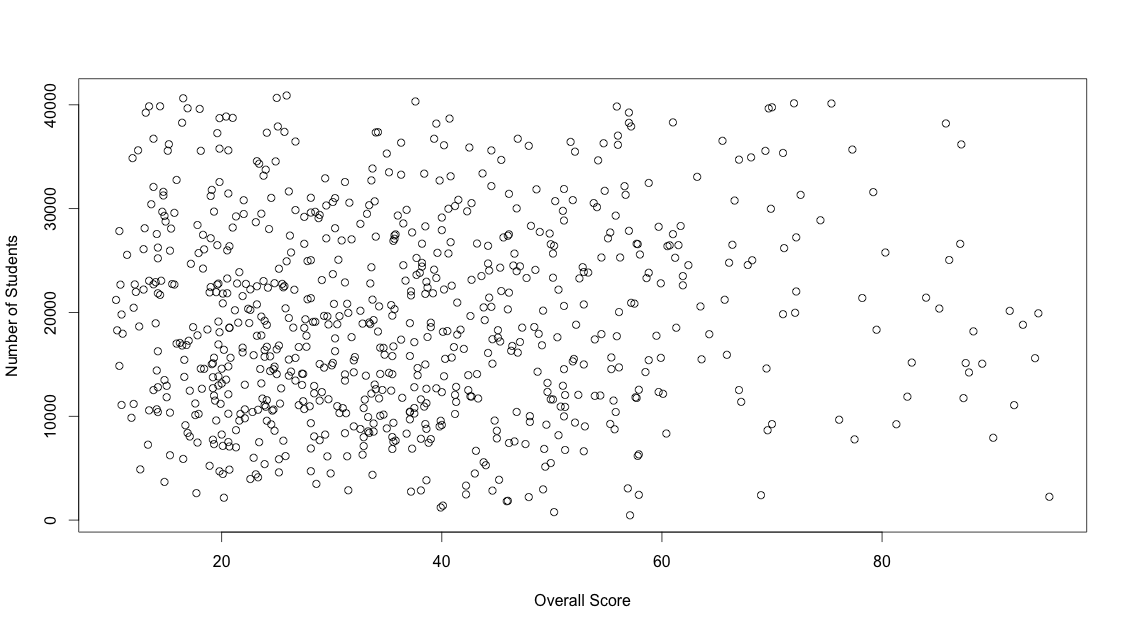World's best small universities blog: does size matter?
The Times Higher Education has announced the world's best small universities, and the student content editor Carly Minsky asks whether size really does matter to students.
- Rankings for Students
- Student life
Share
É«şĐÖ±˛Ą
One question has been playing on my mind for the past few weeks: does size matter to students?
I’m thinking, of course, about whether the number of students enrolled at a university has a significant impact on the student experience. Does it affect the quality of their academic experience for better or worse? Does it make any difference to their social lives and personal development?
Although I’ve approached this as an open question, there is a sense that I’ve already taken a stance, since we’ve just announced the Times Higher Education World’s Best Small Universities 2016-17 ranking – the very first ranking designed with the student experience in mind.
Happily, this project has already proven worthwhile; although it’s certainly not the case that smaller is necessarily better (more on that later). The results of the ranking and my discussions with students at these universities have confirmed that there is something distinctive and valuable about the student experience in a tiny institution.
Students across these 20 “tinyversities”, as we affectionately termed them, have shared their thoughts on the benefits, and a few drawbacks, of belonging to a much smaller than average student body.
With hardly any exceptions, they have reported closer relationships with their teachers that enables teaching styles and course content suited to their personal needs.
I was surprised to hear that these students are particularly glad not to suffer with what they call “administrative red tape”. Many said that the small numbers of student and faculty allows more flexibility and empowers students to be proactive in contributing to administrative decisions, including timetabling and budgets.
The biggest advantage of small universities, at least to my mind, is the social environment they create. More than one student compared their university with a “countryside village” – something that resonated with me personally.
I attended an average-sized university as an undergraduate: the University of Nottingham, which has just over 30,000 students on last count in 2012-13. The campus was so large that it took me 40 minutes to walk from my halls of residence to the physics department, until I realised that I was taking the vehicle route and discovered pedestrian shortcuts. Nonetheless, from one end to the other it was a good 25-minute walk, and I never once recognised a fellow physics student on my daily commute.
But when I moved on for my postgraduate studies to the University of Oxford, quite the opposite happened. Just a short walk up the street, from the graduate residence to the main college site, would take almost as long as the trek across Nottingham’s campus, but only because I would run into half the people I knew in Oxford on a stroll that would otherwise take just a few minutes.
This “village feel” is wonderful in many ways, and particularly helpful in difficult times, as one student blogger also mentioned. Feeling part of a community is so important when dealing with social problems, exam stress and all the other personal issues that students inevitably have to handle. But a small university comes with disadvantages too, not least because a tiny environment is not for everyone.
Some students at the world’s best small universities did recognise the negatives of attending a small institution. Some had previously attended larger universities, others were simply speculating.
One student lamented the lack of specialised courses, explaining that there are simply too few students to run the high-level mathematics courses required at a master’s level.
Interestingly, another student touched upon a very pertinent point, although it seems obvious now: small universities are easier to overlook, often suffering a reputation far below the quality of their research and innovation would suggest. In fact, this was one of our motivations for creating the small universities ranking.
This student explained that so many people have never heard of her university, or know where it is, despite it leading the way for research in particular fields.
With fewer current students, teachers and researchers, it’s clear that many small universities simply can’t get out there in the academic world in the way that the powerhouses can; they just can’t produce the same publication output, attend as many conferences, or directly network with as many people and external bodies. And that’s without even considering the dramatically smaller alumni network.
We might therefore expect a correlation between the size of a university (total students) and it’s “quality” – its score in the É«şĐÖ±˛Ą World University Rankings. Since the rankings are partly based on teaching and research reputation surveys, it’s plausible that at least in this respect, size does matter.
However, plotting É«şĐÖ±˛Ą World University Ranking score against the number of students shows that there’s only a weak correlation between quality and size.

Even if anecdotally, small universities are more likely to be under-appreciated, there are always exceptions to the rule. The world’s best university this year in the rankings is the California Institute of Technology, with only 2,243 students in total. Its model – it was intentionally designed as a small and focused research university covering most broad disciplines – has been almost as successfully replicated by POSTECH in South Korea, which ranks at position 116 and has just over 3,000 students.
There’s no obvious answer to the question of whether size matters for universities, or for their students. But it’s at least interesting and useful to isolate these institutions, see how they compare, and hear from their students as to what makes the experience unique at a tiny university.
